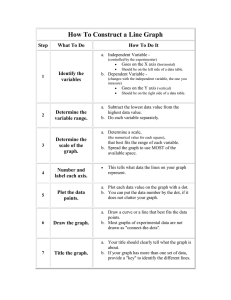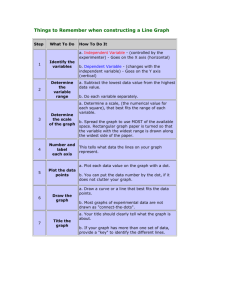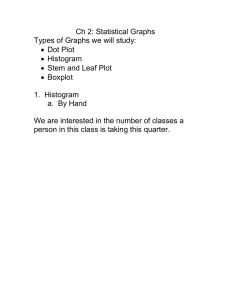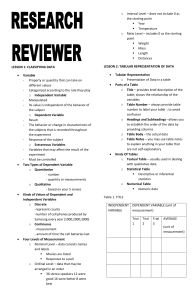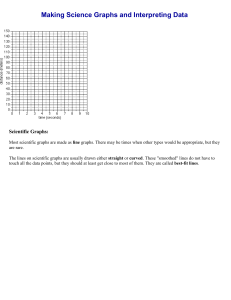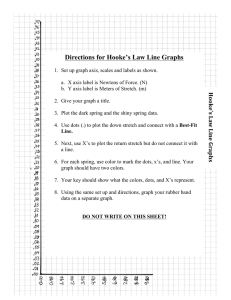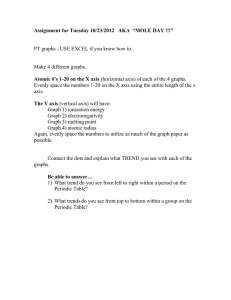How to Construct a Line Graph
advertisement
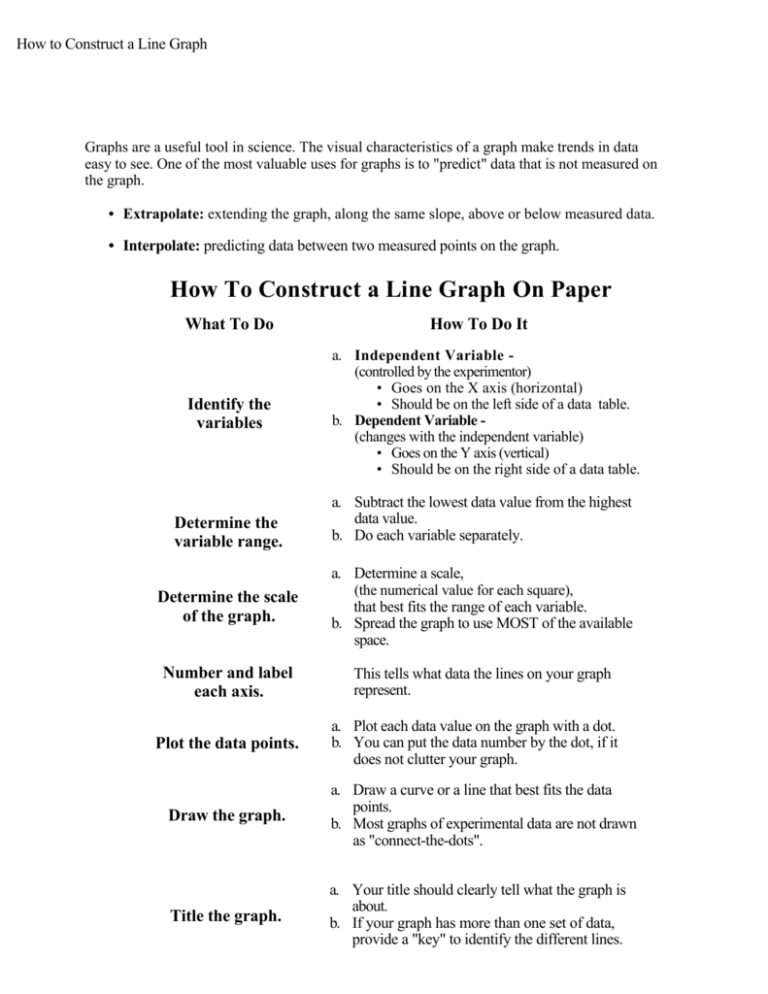
How to Construct a Line Graph Graphs are a useful tool in science. The visual characteristics of a graph make trends in data easy to see. One of the most valuable uses for graphs is to "predict" data that is not measured on the graph. • Extrapolate: extending the graph, along the same slope, above or below measured data. • Interpolate: predicting data between two measured points on the graph. How To Construct a Line Graph On Paper What To Do Identify the variables Determine the variable range. How To Do It a. Independent Variable (controlled by the experimentor) • Goes on the X axis (horizontal) • Should be on the left side of a data table. b. Dependent Variable (changes with the independent variable) • Goes on the Y axis (vertical) • Should be on the right side of a data table. a. Subtract the lowest data value from the highest data value. b. Do each variable separately. Determine the scale of the graph. a. Determine a scale, (the numerical value for each square), that best fits the range of each variable. b. Spread the graph to use MOST of the available space. Number and label each axis. This tells what data the lines on your graph represent. Plot the data points. a. Plot each data value on the graph with a dot. b. You can put the data number by the dot, if it does not clutter your graph. Draw the graph. a. Draw a curve or a line that best fits the data points. b. Most graphs of experimental data are not drawn as "connect-the-dots". Title the graph. a. Your title should clearly tell what the graph is about. b. If your graph has more than one set of data, provide a "key" to identify the different lines.

